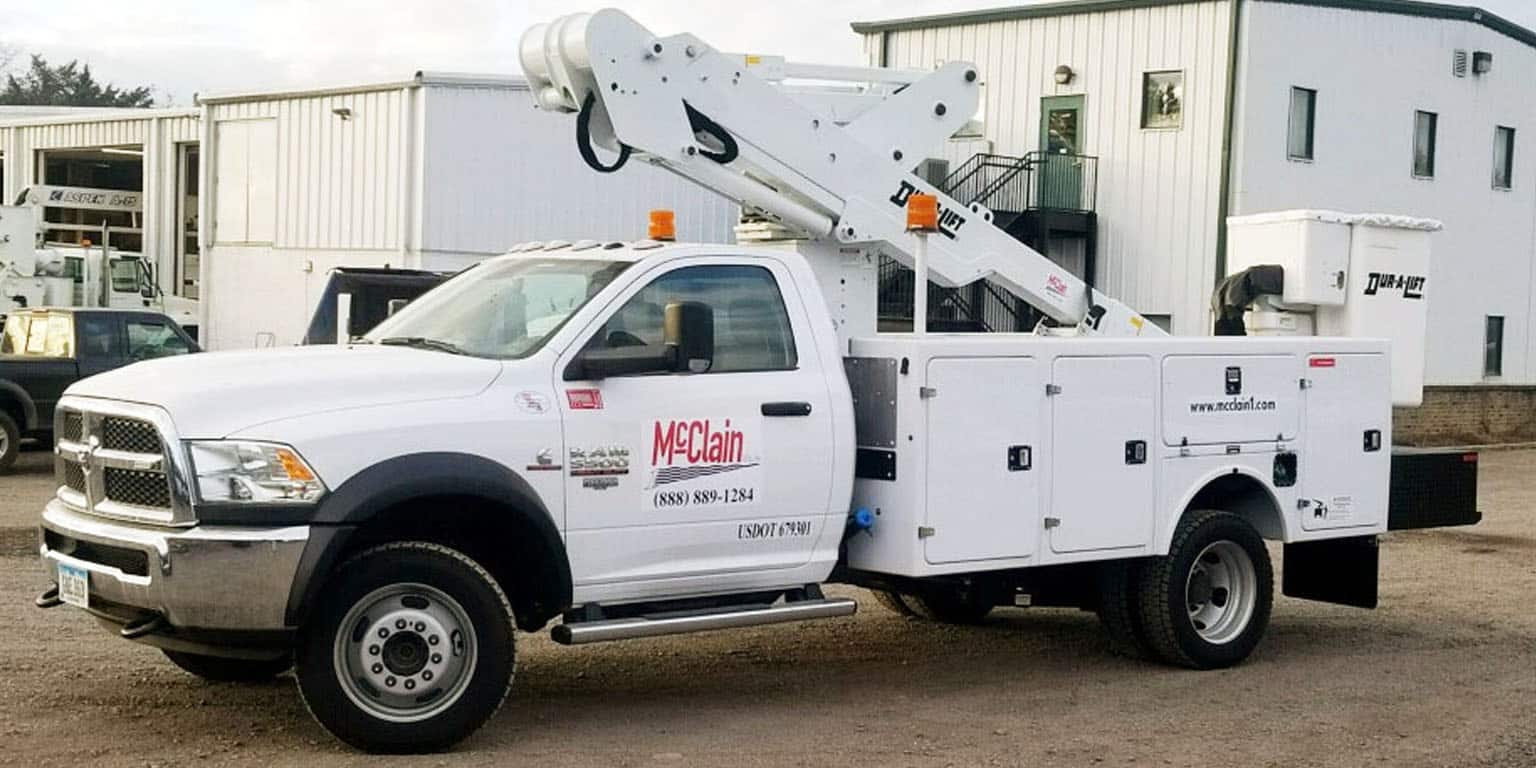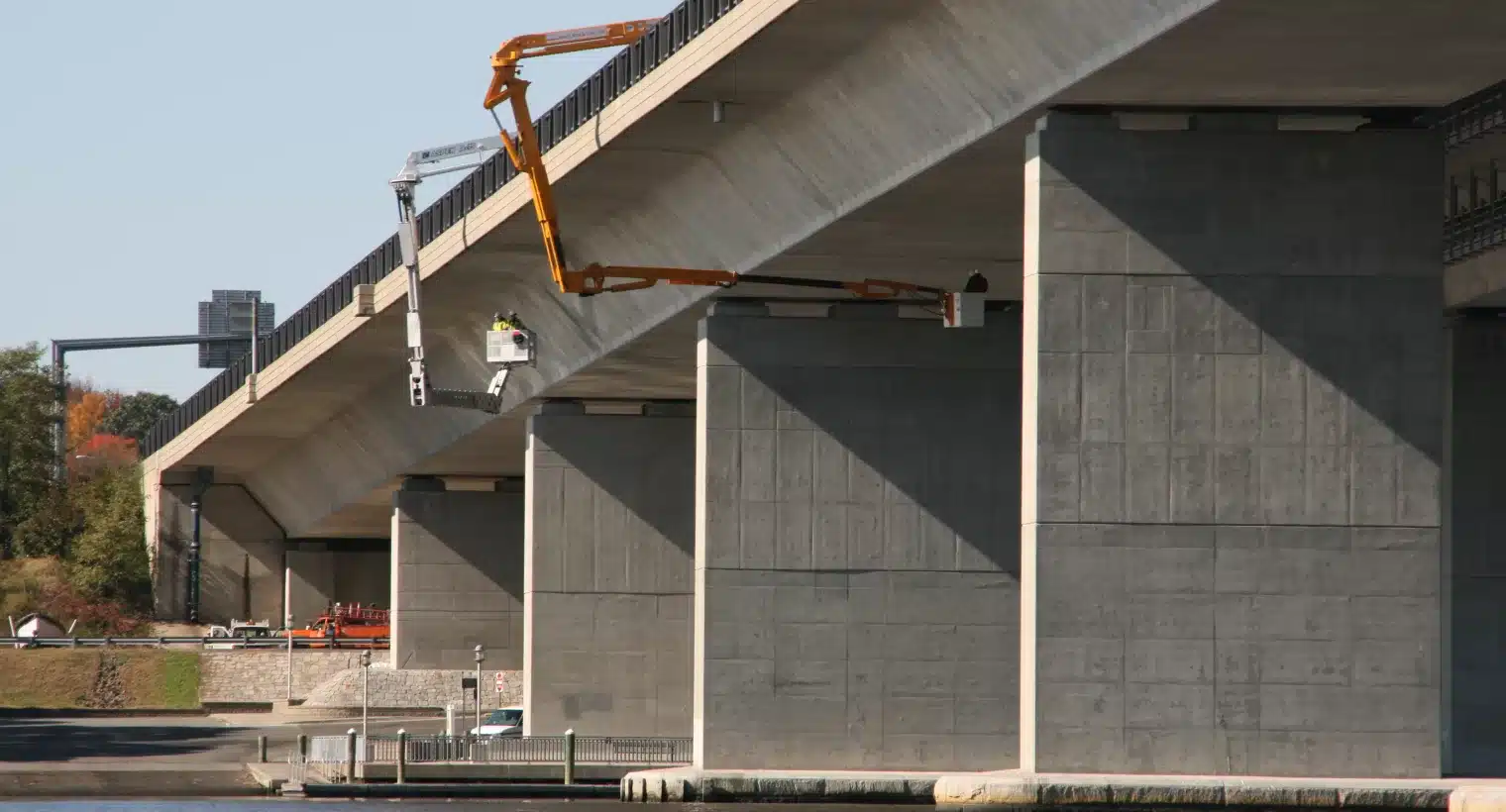As part of the overall transportation infrastructure industry, highway bridge maintenance and construction plays a critical role in ensuring the safety and functionality of the nation’s transportation networks.
However, various types of resource gaps can present significant challenges and potentially hinder the effective management and upkeep of bridges in the United States. When we speak of resources, this can range from budgets to personnel to equipment and technology.
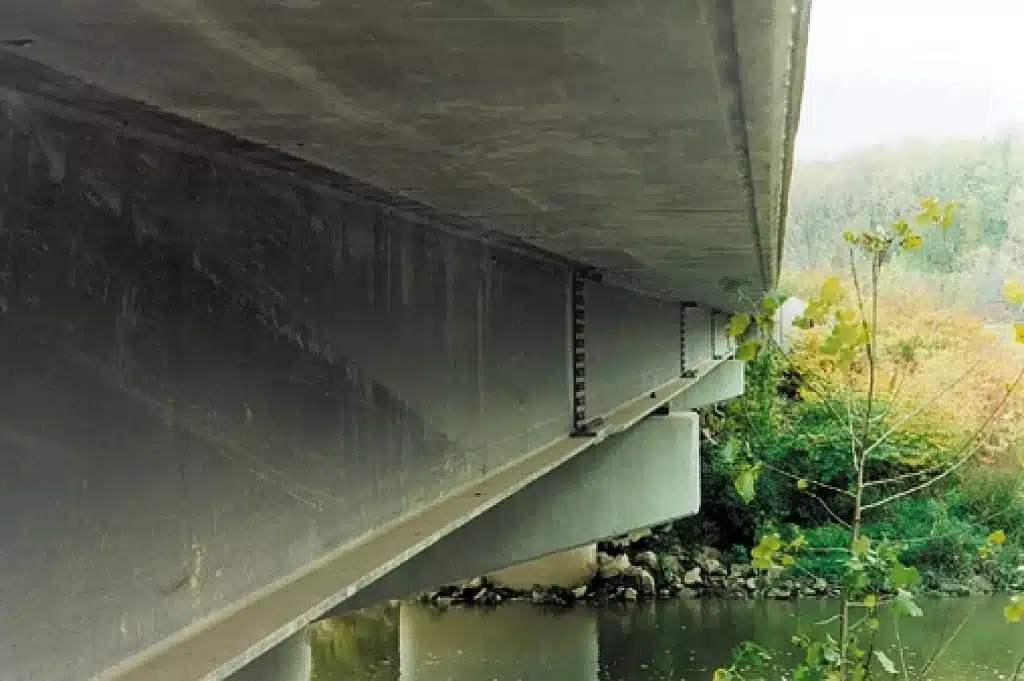
Understanding Bridge Maintenance and Construction Resource Gaps
Resource gaps in bridge maintenance and construction refer to the disparity between the resources required for effective bridge management and the resources actually available. These gaps encompass various aspects, including financial, technological, human resources, and institutional support.
Such imbalances can result in inadequate funding, outdated infrastructure, lack of skilled personnel, and insufficient planning and execution, all of which compromise the safety and longevity of bridges.
Some Major Causes of Resource Gaps in Bridge Maintenance and Construction
Gaps in bridge maintenance and construction resources pose significant challenges to the integrity and functionality of bridge infrastructure. Among the various types of resource issues that must be addressed are the following:
- Insufficient Funding: One of the primary causes of resource gaps is insufficient funding. Governments and organizations often face budget constraints, leading to limited funds allocated for bridge maintenance and construction. This constraint can impede regular inspections, necessary repairs, and the implementation of new technologies, leaving bridges vulnerable to deterioration and accidents.
- Technological Advancements: Rapid technological advancements have created a disparity between outdated bridge infrastructure and new maintenance and construction techniques. Limited resources can prevent the adoption of innovative technologies, such as sensors, drones, and artificial intelligence, which can significantly enhance bridge monitoring, maintenance, and lifespan.
- Workforce Shortages: The shortage of skilled personnel in the bridge engineering field contributes to resource gaps. A lack of specialized professionals hampers the efficient assessment, design, and implementation of bridge maintenance and construction projects. Additionally, an aging workforce and a lack of succession planning further exacerbate this issue.
While the solutions to these issues are often beyond the scope of individual agencies, on a larger scale there are potential remedies that can be implanted to address these major resource gaps.
- Increased Funding: Governments and relevant authorities should prioritize bridge maintenance and construction by allocating adequate funds. Increased funding would enable regular inspections, timely repairs, and implementation of advanced technologies to monitor and maintain bridges effectively. Public-private partnerships and innovative financing models can also help bridge the resource gap by attracting private investment into infrastructure projects.
- Technology Integration: Embracing technological advancements is crucial for addressing resource gaps. Governments and organizations should invest in research and development to identify and adopt cutting-edge technologies that enhance bridge monitoring, maintenance, and construction. This includes the use of sensors for real-time data collection, drones for bridge inspections, and advanced modeling software for structural analysis.
- Workforce Development: Addressing the shortage of skilled personnel requires initiatives to attract and train the next generation of bridge engineers. Encouraging educational programs, apprenticeships, and scholarships in bridge engineering can foster the development of a qualified workforce. Collaboration between academia and industry can ensure that educational programs align with industry needs and promote continuous professional development.
- Efficient Planning and Prioritization: Proper planning and prioritization of bridge maintenance and construction projects can optimize resource utilization. Implementing comprehensive asset management systems, risk assessments, and condition monitoring strategies can help identify critical bridges that require immediate attention. This approach ensures that available resources are directed to the most vulnerable structures, minimizing the impact of resource gaps.
Resource gaps in bridge maintenance and construction pose significant challenges to the safety and longevity of transportation infrastructure. By addressing the causes of these gaps and implementing appropriate solutions, governments, organizations, and stakeholders can bridge the resource divide.
Adequate funding, technological integration, workforce development, and efficient planning can collectively contribute to more effective bridge management and construction, ensuring the safety and reliability of bridges for the communities they serve.
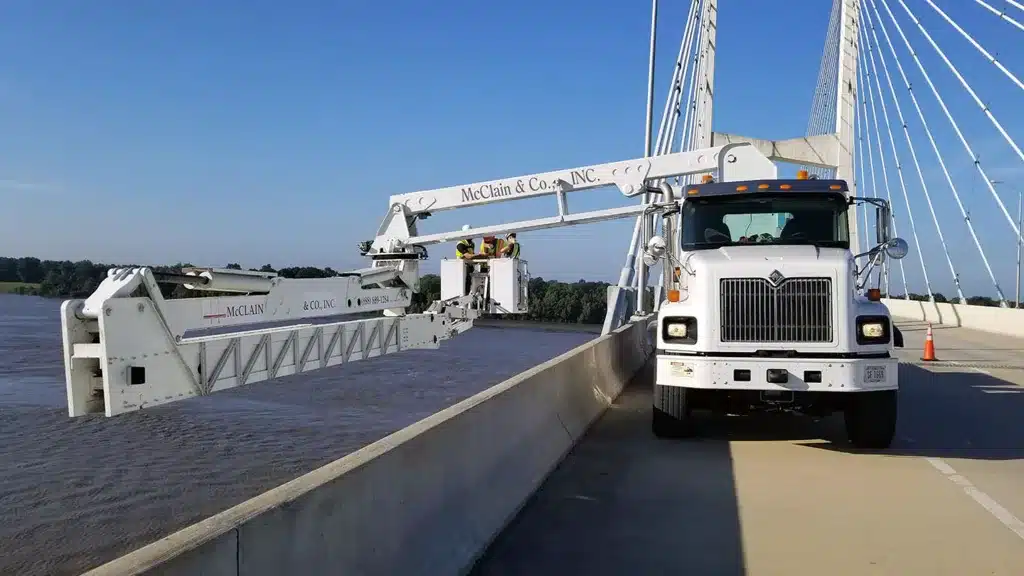
McClain and Company: Filling Local Resource Gaps with Equipment Rentals
When it comes to carrying out the ongoing tasks and functions of highway bridge maintenance, as well as the periodic requirements of new construction, equipment is necessary. And because of the high cost of much of the equipment used for bridge construction and bridge maintenance, rental equipment is a standard option and resource for state DOTs, contractors, and engineering firms.
And this is where McClain and Company helps to fill the project-specific “resource gaps” for agencies and firms engaged in highway bridge maintenance and construction. By providing reliable, world-class equipment rentals – including construction equipment as well as under bridge access equipment – we can help keep these projects on track.
In addition to filling the gaps in equipment resources, renting large equipment such as construction equipment and under bridge access equipment for highway bridge projects offers numerous other advantages and benefits.
Here are just some of the benefits McClain provides by renting these types of equipment to our clients:
- Cost-effectiveness: Renting large equipment is often more cost-effective than purchasing it outright. Highway bridge projects usually have specific equipment requirements that may not be needed in the long term. By renting, project managers can avoid the high initial investment and ongoing maintenance costs associated with owning equipment, making it a financially viable option.
- Flexibility and scalability: Different stages of highway bridge projects may require different types and sizes of equipment. Renting allows project managers to select the specific equipment that suits their needs at each phase. It provides the flexibility to adapt to project requirements and scale up or down as necessary without being burdened by owning equipment that may become obsolete or underutilized.
- Access to specialized equipment: Highway bridge projects often involve complex tasks and unique challenges. Renting large equipment provides access to specialized tools specifically designed for bridge construction and maintenance. These specialized machines offer advanced features, such as under bridge access equipment, which allows workers to safely access hard-to-reach areas under bridges, improving efficiency and safety on the job site.
- Reduced maintenance and storage costs: Owning large equipment comes with additional expenses, such as maintenance, repairs, and storage. Renting equipment, on the other hand, means that we are responsible for ensuring the equipment is well-maintained, in good working condition, and compliant with safety standards. Additionally, project managers don’t have to worry about finding suitable storage space when the equipment is not in use.
- Professional support and training: At McClain, we provide professional support, including equipment setup, training, and troubleshooting assistance. Our knowledgeable staff can guide project teams on the proper operation and safety protocols of the rented equipment. This support ensures that the equipment is used effectively and reduces the risk of accidents or inefficiencies due to inadequate training.
In conclusion, renting our equipment for highway bridge projects brings several advantages, including cost-effectiveness, flexibility, access to specialized equipment, reduced maintenance costs, access to the latest technology, and professional support.
These benefits allow project managers and agencies to optimize their own resources, improve project efficiency, and achieve successful bridge construction and maintenance projects.
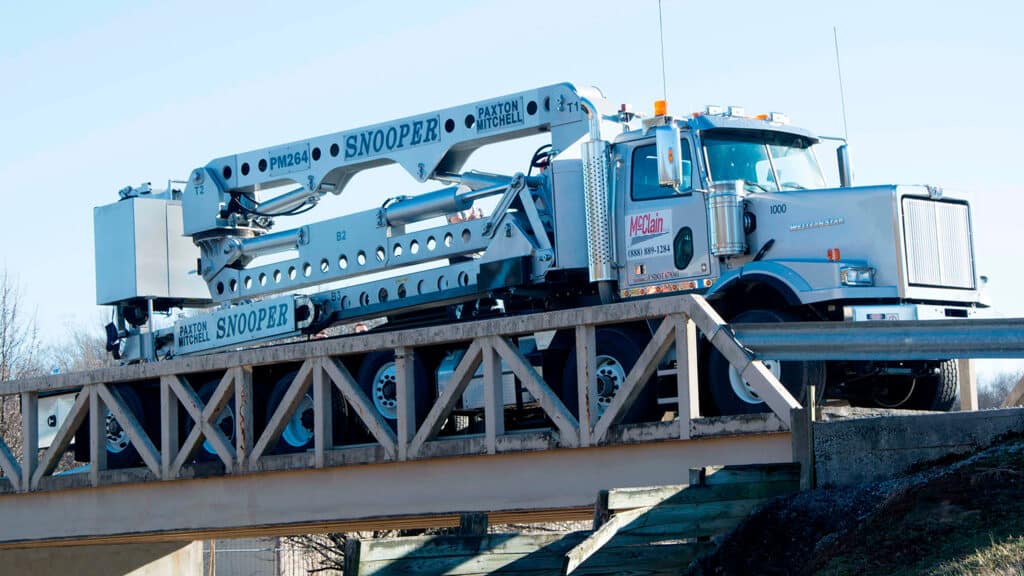
McClain and Company for Bridge Maintenance and Construction Equipment
The professionals at McClain and Company consistently work hard to provide the best in bridge inspection rental equipment. And along with our high-quality equipment, we also provide the very best in customer service.
While we specialize in renting under bridge access equipment, McClain also offers a wide range of Hi-Rail, other Utility, and Aerial Equipment rentals. In addition, we provide our customers with a variety of traffic safety and highway construction equipment rentals.
So, if you have questions about any of our equipment rental services, we invite you to contact McClain and Company today by calling us at 1.888.889.1284 or emailing us at [email protected].

